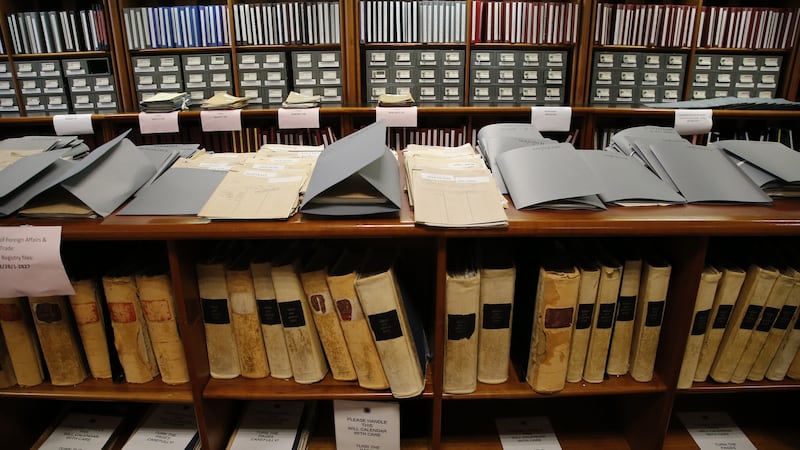We are now almost six months on from the publication of the report of the Commission of Investigation into Mother and Baby Homes. The report generated surprise and anger among survivors who gave testimony to the commission, particularly in relation to the commission’s handling of that testimony, and a number of its findings which seem to contradict both survivors’ testimony and other parts of the report. It is now beyond doubt that survivors were primarily directed to the confidential committee, which heard from 550 survivors, and rarely to the judicial or investigation committee, which heard from 64 survivors.
The confidential committee report reduced verbatim and written testimony by individual survivors to short paraphrased accounts, despite claims that the report was “expressed largely in the words used by the individual themselves”. Sparse quotes from survivors were decontextualised, misrepresented and, in at least one case, not to be found in the testimony.


Since the report was published, many survivors, advocates, journalists and members of the public have called for its repudiation by the Government. It is worth looking at what might be lost should the Government choose to exercise that option.
All of the really useful work done by the commission would remain available: the chapters on individual institutions; the accompanying statistical analysis of patterns within each institution; the chapters on specific issues such as adoption, deaths and burials; and the social history chapters, some of which go very close to contradicting the conclusions outlined by the commission in its final report. This material is already in the public domain and can remain there.
Strongly disputed
Then there are the commission’s findings and recommendations. Three findings in particular have been strongly disputed by survivors and many others: 1) “very little evidence of physical abuse”; 2) “very little evidence that children were forcibly taken from their mothers; it accepts that the mothers did not have much choice, but that is not the same as ‘forced adoption’”; 3) “responsibility for that harsh treatment [of women in the homes] rests mainly with the fathers of their children and their own immediate families. It was supported by, contributed to, and condoned by the institutions of the State and the churches.”
Any redress scheme to be established does not depend on the report's recommendations. That process can proceed at any time
These conclusions are disputed, not just by survivors, but by many commentators who do not share the commission’s view that Church and State were not the primary movers and operators of this vast system of incarceration and family separation. The repudiation of these findings would not be seen by most as a loss; on the contrary, many survivors view their rejection, as the State’s official view of what happened to them, to be essential.
One of the commission’s recommendations is already being implemented by the Government: the new Adoption (Information and Tracing) Bill introduced by Minister for Children Roderic O’Gorman responds to the recommendation that survivors should be entitled as of right to information about their identity. The commission, while it goes into detail on potential redress schemes, acknowledges that redress is a matter for the Government. One of its recommendations, that no one who entered a mother and baby home after 1973 (the year the unmarried mothers’ allowance was introduced) should be entitled to redress, has already been rejected by the Government. Any redress scheme to be established does not depend on the report’s recommendations. That process can proceed at any time.
Recommendations relating to the archives seen by the commission require the records of Government departments, local authorities and the HSE to be made available either under the National Archives Act, 1986, or on similar terms 30 years after their creation, redacted where necessary to preserve individual privacy. The commission “encourages” the religious congregations who ran the homes “to make more documentation publicly available”.
This could have been much stronger, given the importance of these records to survivors, and to anyone carrying out research on mother and baby homes, industrial schools, Magdalene laundries and the powerful control the Catholic church exercised over government policy and the fate of thousands of our citizens. The administrative records of the congregations are crucial to this objective, as they demonstrate the close relationship between church and State, as well as operational details of the various institutions.
Methodology
What of the confidential committee report, the source of so much controversy about methodology and representation of the testimony given by the vast majority of survivors who came before the commission? Already, the Minister is talking about having a human rights expert review this testimony (the tapes of which have been preserved despite the commission’s efforts to have them destroyed). This solution is at present too vague to be evaluated properly.
Survivors are now, rightly, receiving copies of their tapes on foot of subject access requests to the Department of Children, Equality, Disability, Integration and Youth, the body now responsible for these records since the dissolution of the commission. Serious consultation with all survivors who gave testimony is required to establish their wishes with regard to its ultimate fate; some may require destruction, some may prefer public availability after a period of years, and some will prefer public availability as soon as the material can be properly processed.
Repudiation of the report will not result in losses to survivors, researchers or the public. Nor will it require a new investigation
All of this is possible without relying on the commission’s recommendations. Those that are useful, such as a right to identity information, and the opening up of records which should be open anyway, are either being implemented or should be in accordance with existing law. The exception is the archives of the religious congregations, which should be designated public records, given the congregations’ central role in delivery of institutional services in Ireland for the last century. The commission did not recommend this, but the Government should strongly consider it. The Government should also consider the Clann Project’s innovative recommendation for a dedicated archive, possibly digital, of all institutional and relevant State records to be created on the site of the old Sean MacDermott Street Magdalene laundry.
One definite loss which would result from the Government’s repudiation of the report would be public loss of confidence in the commission, already evident in many quarters. The commissioners have not helped anyone, including themselves, by refusing to communicate with survivors and the media, and relying on the legal right of commissioners not to appear in public. It was obvious from the date of the report’s publication that survivors have well-justified questions about how their testimony, dealing with deeply traumatic events in their lives, was dealt with. These questions can only be answered by the commissioners or a spokesperson on their behalf.
Repudiation of the report will not result in losses to survivors, researchers or the public. Nor will it require a new investigation. It will, however, give some solace to survivors, whose voices, so poorly represented in the report, should now be listened to by Government. The report cannot stand as the official account of the treatment of many thousands of women and children in these institutions.










